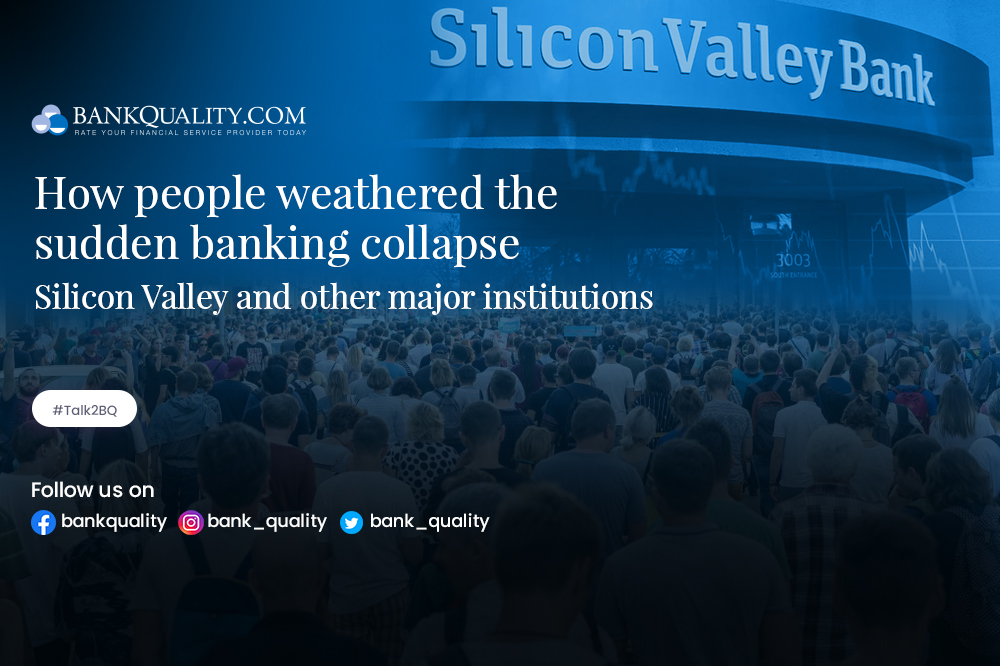
Regulatory authorities closed Silicon Valley Bank (SVB), a major banking institution and seized its deposits. This is the second-largest banking failure in the United States’ history since the 2008 financial crisis
Depreciation of SVB’s investments and significant withdrawals made by the depositors led to the bank's collapse
Impact of SVB's collapse on the others banks
US consumers’ impact on the financial system after the banking crises
Silicon Valley Bank (SVB) suffered an abrupt and rapid collapse on 10 March and was closed by the Department of Financial Protection and Innovation.
Two days prior, SVB, headquartered in Santa Clara, California, was actively seeking to raise funds. However, within 48 hours, the venture capital community, which had previously invested in and supported SVB, panicked that caused the bank's 40-year operation to come to an end.
Depreciation of the bank's investments and significant withdrawals made by the depositors led to the bank's collapse
From 2019 to 2022, SVB experienced significant growth, resulting in a substantial increase in deposits and assets. The bank utilised most of its excess deposits to purchase treasury bonds, considered ‘safe’ assets, and long-term debts, with only a small portion being held in cash.
In 2022, the Federal Reserve (Fed) raised interest rates to combat inflation, causing investors to perceive SVB's bonds as riskier investments that led to a drop in the bank's bond portfolio. The investors were able to purchase bonds at higher interest rates, causing the value of SVB’s bonds to decrease.
The cause of the bank run is very hard to specify. The bank's announcement of a capital raise and the sale of a large number of securities at a loss, triggered the people to take their deposits from the bank. The bank was closed by regulators due to depositors' overwhelming withdrawal requests amounting to $42 billion and the bank’s inability to generate adequate funds to fulfil its cash obligations.
SVB was placed under the FDIC and created the Deposit Insurance National Bank of Santa Clara, which now holds SVB’s insured deposits.
Impact of SVB's collapse on other banks
The second-largest bank failure in US history has created a ripple effect that has captured the American financial industry. SVB, a key player in the technology and venture capital community, has left many companies and pecunious individuals uncertain about the fate of their money.
According to the Social Science Research Network report on “Monitoring Tightening and US Bank Fragility in 2023”, 186 banks across the US could face the same risk as SVB if the Fed increases the interest rates or if even half of the uninsured depositors withdraw their funds.
Amidst the recent upheaval caused by the collapse of SVB in the US, concerns began to emerge overseas regarding Credit Suisse, considered the elite among Swiss Banks. The apprehension surrounding the bank's viability triggered a sharp decline in both regional and major bank stocks, with First Republic bearing the brunt of the losses, plummeting by 60% on 13 March.
Against this backdrop, Janet Yellen, US Treasury Secretary sought to allay fears regarding the safety of the banking system, reiterating her confidence in the sector during her recent remarks.
US consumers’ impact on the financial system after the banking crises
During the crises, the economy showed signs of an impending recession, resulting from the loss of assets and income. This had a domino effect and impacted the economy. Despite this, consumer spending remained relatively stable. However, delinquency rates and balances increased, leading to a rise in credit card charge-offs to 2.6% in the first quarter, up by 0.57% from the fourth quarter of 2022. Additionally, balances surged by 20.1% annually, leading to a decline in personal savings rate from 13.4% in 2021 to 4.6% in February.
U.S. personal savings rate fluctuated from January 2019 to February 2023, reflecting economic shifts and consumer behaviour
Figure 1: Personal Savings Rate in the US (Jan 2019- Feb 2023)
Source: CNBC and US Bureau of Economic Analysis via FRED
As services catch up to pre-pandemic levels, the financial industry is experiencing the emergence of cracks. Credit card balances and delinquencies have risen, indicating the likelihood of tighter credit standards. The industry faces these obstacles out of necessity and an increased probability of stricter regulations.
According to the most recent data available from the Fed, the share of wealth held by the top 1% of earners has continued to climb, rising from 29.7% to 31.9% as of mid-2022. This trend has put pressure on lower-income consumers for years.